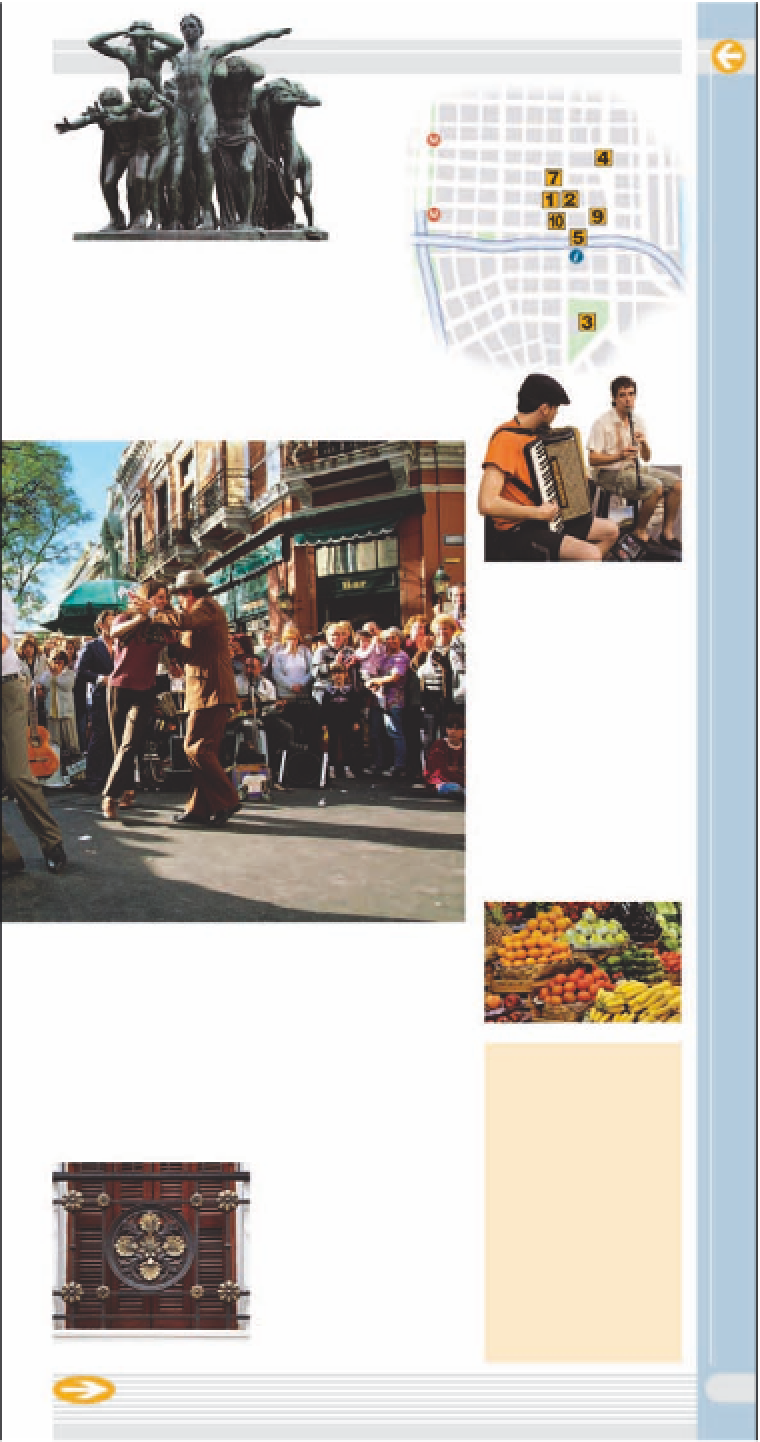Travel Reference
In-Depth Information
*OEFQFOEFODJB
4BO+VBO
$
Monumento del
(
0$<2
Canto al Trabajo
A muscular allegory of
the collective worker,
this iconic monument
(above)
depicts work-
ers bound together in
hard labor. Facultad de
Ingeniería is nearby.
%
Museo de
$9-8$1'(*$5$<
Arte Moderno
At the center of San
Telmo's art scene, the
MAMBA displays
modern Argentinian art and
work by masters such as
Dalí, Matisse, and Picasso.
$9(1,'$
^
Street Performers
On Sundays
,
bands
(above)
cram the side-
walks of Calle Defensa
while dancers perform on
the cobblestone path.
Tango is a big draw here.
&
Mercado de
San Telmo
This 1890s indoor market
(below)
retains its original
structure. Food and meat
stalls occupy the central
patio, while knick-knacks
are in the outer spaces.
*
Balconies
(
Iglesia Nuestra
Señora de Belén
Built in 1733, this church
has a Neo-Baroque
façade and Andalusian
towers, which were
added in 1852. The inte-
rior reflects the church's
colonial origins, with nine
altars and saints' statues.
San Telmo's antique
balconies
(below)
range
from wrought iron to
balustraded stone and
span several styles.
Many are hung with laun-
dry or bird cages, offer-
ing a glimpse into San
Telmo's working class.
The Founding of
Buenos Aires
In 1536, Spanish explor-
er Pedro de Mendoza
led an expedition to the
River Plate. He built a
settlement at Parque
Lezama, calling the
town Nuestra Señora
Santa María del Buen
Aire. Faced with attack
from the natives, the
settlement was aban-
doned in 1541
(see p42)
.
)
Pasaje de la
Defensa
This residence built for
the Ezeiza family in 1872
later became a
conven-
tillo
housing over 30
immigrant families at a
time. Today it is home to
a colorful flea market.
19
If you have only one day to enjoy San Telmo make it a Sunday,
when the famous antiques fair takes place.


































